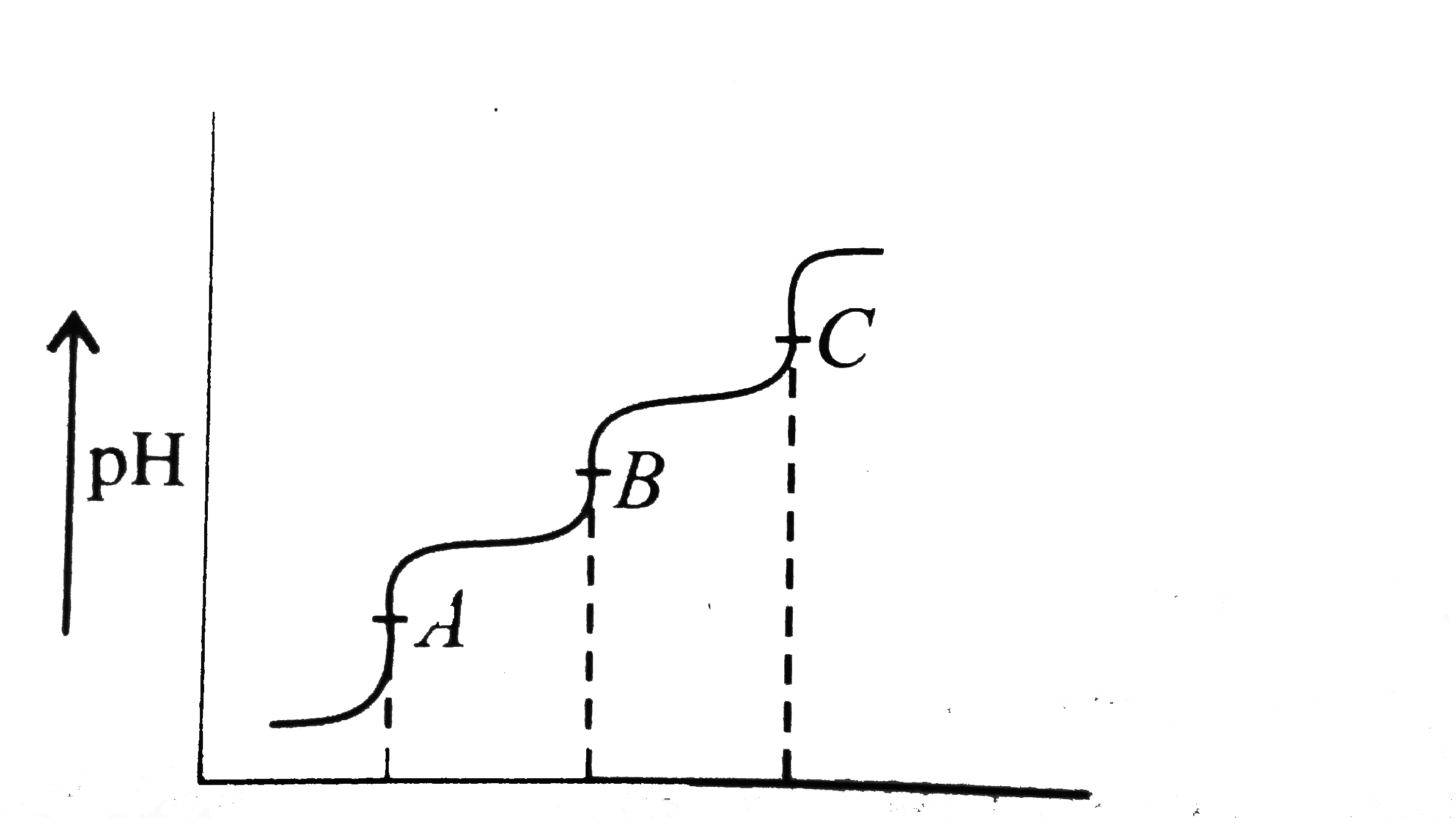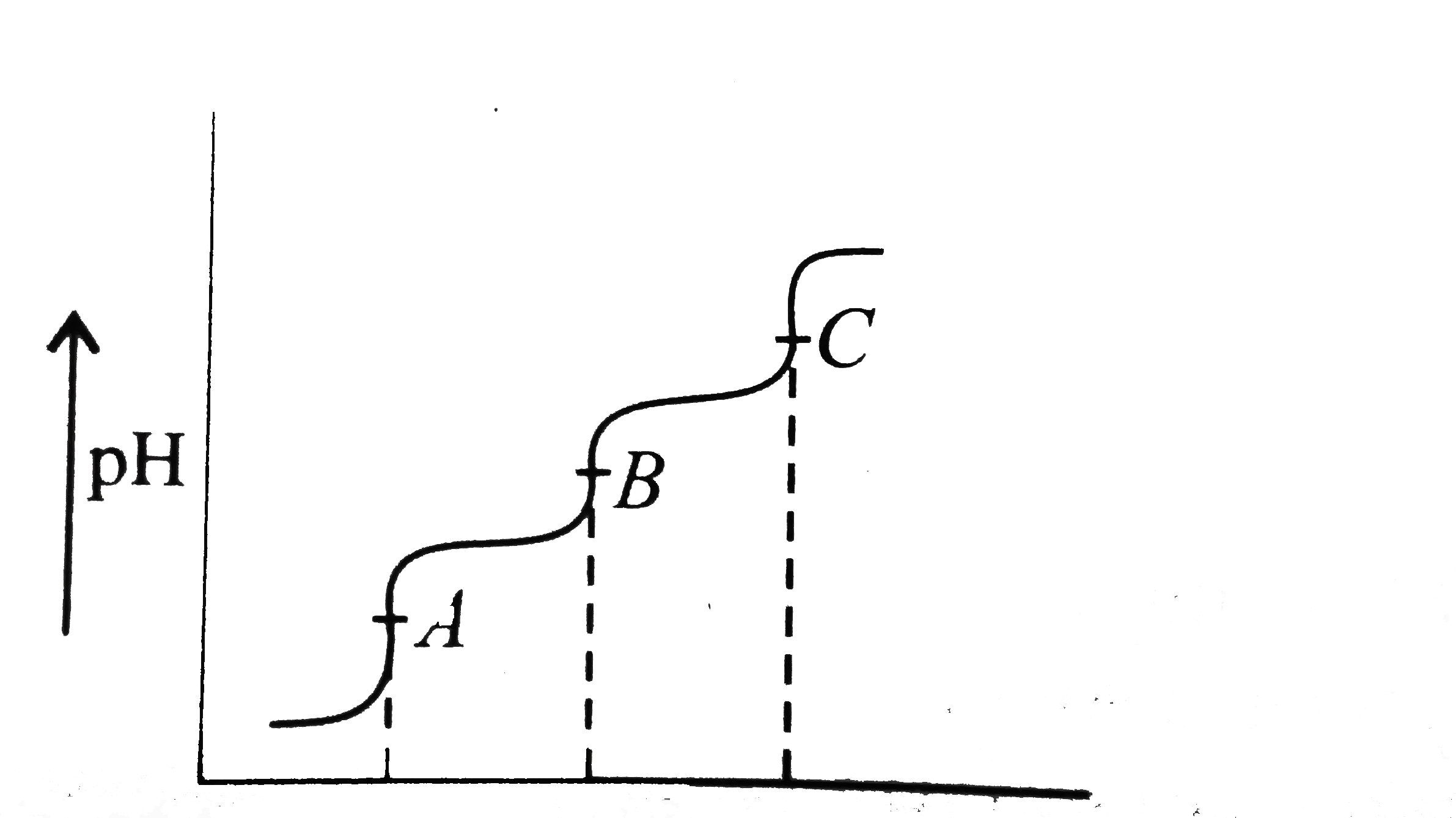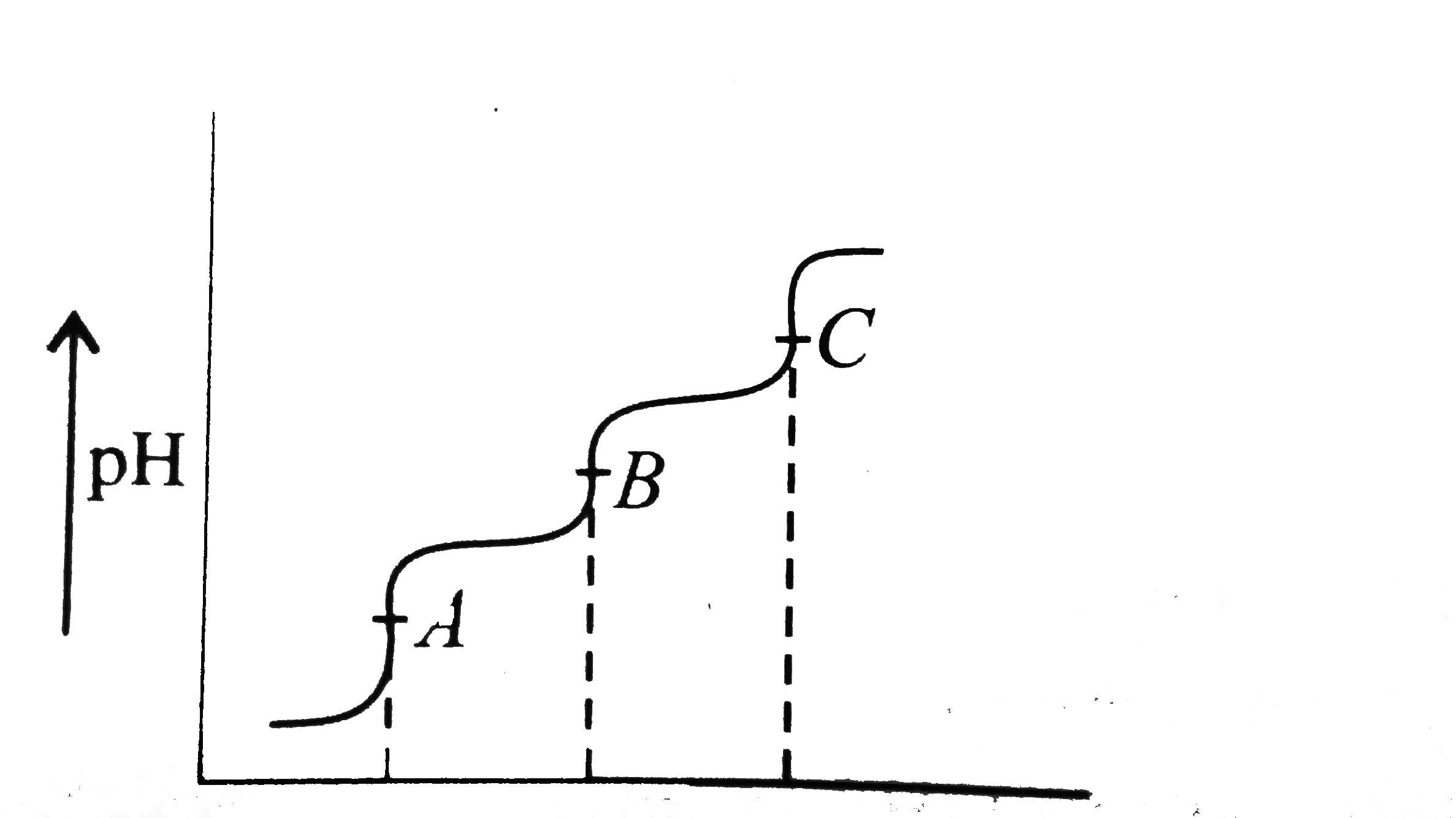Ratio of [HA+] in 1L of 0.1MH3A solution [Ka1=10−5,Ka2=10−8Ka3=10−11]& upon addition of 0.1mole HCl to it will be :
10
100
1000
10,000
To solve the problem, we need to find the ratio of (HA+) in a 1L solution of 0.1MH3A before and after the addition of 0.1 moles of HCl. The dissociation constants given are Ka1=10−5, Ka2=10−8, and Ka3=10−11.
1. Initial Concentration of H3A:
- We start with a 0.1M solution of H3A. The initial concentration of H3A is 0.1M.
2. Dissociation of H3A:
- The first dissociation of H3A can be represented as:
H3A⇌H++H2A−
- Using the first dissociation constant:
Ka1=(H+)(H2A−)(H3A)
- Let x be the amount that dissociates. Then:
(H+)=x,(H2A−)=x,(H3A)=0.1−x
- Substituting into the equation:
10−5=x20.1−x
- Assuming x is small compared to 0.1, we can approximate:
10−5≈x20.1
- Rearranging gives:
x2=10−6⟹x=10−3 M
- Thus, (H+)=10−3 M and (H2A−)=10−3 M.
3. Concentration of H2A−:
- The concentration of H2A− before adding HCl is 10−3 M.
4. Second Dissociation of H2A−:
- The second dissociation can be represented as:
H2A−⇌H++HA2−
- Using the second dissociation constant:
Ka2=(H+)(HA2−)(H2A−)
- Let y be the amount that dissociates from H2A−:
(H+)=10−3+y,(HA2−)=y,(H2A−)=10−3−y
- Substituting into the equation:
10−8=(10−3+y)y10−3−y
- Assuming y is small compared to 10−3:
10−8≈(10−3)y10−3⟹y≈10−5 M
- Thus, (HA2−)≈10−5 M.
5. Adding 0.1 moles of HCl:
- Adding 0.1 moles of HCl to 1L increases the concentration of H+ to 0.1+10−3≈0.1 M.
- The equilibrium concentrations will shift due to the common ion effect, primarily affecting the dissociation of H2A−.
6. Final Concentration of HA+:
- After adding HCl, the concentration of HA2− will decrease due to the increased H+ concentration.
- The new equilibrium can be calculated similarly, but for simplicity, we can assume that the contribution of HA2− will be negligible compared to the H+ from HCl.
7. Calculating the Ratio:
- The ratio of (HA+) before and after the addition of HCl can be approximated as:
Ratio=10−510−11=106
Final Answer:
The ratio of (HA+) in 1L of 0.1MH3A solution before and after adding 0.1 moles of HCl is 106.
- We start with a 0.1M solution of H3A. The initial concentration of H3A is 0.1M.
- The first dissociation of H3A can be represented as:
H3A⇌H++H2A−
- Using the first dissociation constant:
Ka1=(H+)(H2A−)(H3A)
- Let x be the amount that dissociates. Then:
(H+)=x,(H2A−)=x,(H3A)=0.1−x
- Substituting into the equation:
10−5=x20.1−x
- Assuming x is small compared to 0.1, we can approximate:
10−5≈x20.1
- Rearranging gives:
x2=10−6⟹x=10−3 M
- Thus, (H+)=10−3 M and (H2A−)=10−3 M.
- The concentration of H2A− before adding HCl is 10−3 M.
- The second dissociation can be represented as:
H2A−⇌H++HA2−
- Using the second dissociation constant:
Ka2=(H+)(HA2−)(H2A−)
- Let y be the amount that dissociates from H2A−:
(H+)=10−3+y,(HA2−)=y,(H2A−)=10−3−y
- Substituting into the equation:
10−8=(10−3+y)y10−3−y
- Assuming y is small compared to 10−3:
10−8≈(10−3)y10−3⟹y≈10−5 M
- Thus, (HA2−)≈10−5 M.
- Adding 0.1 moles of HCl to 1L increases the concentration of H+ to 0.1+10−3≈0.1 M.
- The equilibrium concentrations will shift due to the common ion effect, primarily affecting the dissociation of H2A−.
- After adding HCl, the concentration of HA2− will decrease due to the increased H+ concentration.
- The new equilibrium can be calculated similarly, but for simplicity, we can assume that the contribution of HA2− will be negligible compared to the H+ from HCl.
- The ratio of (HA+) before and after the addition of HCl can be approximated as:
Ratio=10−510−11=106
The ratio of (HA+) in 1L of 0.1MH3A solution before and after adding 0.1 moles of HCl is 106.
Topper's Solved these Questions
- IONIC EQUILIBRIUMBOOK - RESONANCECHAPTER - IONIC EQUILIBRIUMEXERCISE - Part -II Single and double value integer type
8 Videos
- IONIC EQUILIBRIUMBOOK - RESONANCECHAPTER - IONIC EQUILIBRIUMEXERCISE - Part III One or more than one option correct type
11 Videos
- IONIC EQUILIBRIUMBOOK - RESONANCECHAPTER - IONIC EQUILIBRIUMEXERCISE - Part -II (only one option correct type)
42 Videos
- HYDROCARBONBOOK - RESONANCECHAPTER - HYDROCARBONEXERCISE - ORGANIC CHEMISTRY(Hydrocarbon)
50 Videos
- IUPAC NOMENCLATURE & STRUCTURAL ISOMERISM BOOK - RESONANCECHAPTER - IUPAC NOMENCLATURE & STRUCTURAL ISOMERISM EXERCISE - Advanced Level Problems Part-5
2 Videos
Similar Questions
H3A is a weak triprotic acid (Ka1=10−5,Ka2=10−9,Ka3=10−13). What is the value of pX10 of 0.1 M H3A (aq) solution? Where pX =- logX and X = [A3−][HA2−]
View SolutionCalculate the pH and concentration of all
species present at equilibrium in 0.1 M H3PO4 solution.
Ka1=7.5×10−3,Ka2=6.2×10−8,Ka3=4.2×10−13
View Solution
Knowledge Check
Acidic solution is defined as a solution whose [H⊕]>[ΘOH]. Base solution has [ΘOH]>[H⊕]. During acid-base titrations, pH of the mixture will change depending on the amount base added. This variation is shown in the form of graph by making plot as titration curves 100mL of 1.0MH3A(Ka1=10−3,Ka2=10−5,Ka3=10−7) is titrated against 0.1MNaOh. The titration curve is as follows.

What would be the pH is more of NaH2A is added to the titration mixture at point C ?A11.0B10.2C9.7D7.7Acidic solution is defined as a solution whose [H⊕]>[ΘOH]. Base solution has [ΘOH]>[H⊕]. During acid-base titrations, pH of the mixture will change depending on the amount base added. This variation is shown in the form of graph by making plot as titration curves 100mL of 1.0MH3A(Ka1=10−3,Ka2=10−5,Ka3=10−7) is titrated against 0.1MNaOh. The titration curve is as follows.

What will be the change in pH from point B to point C?A2.8B3.2C4.6D0.94Acidic solution is defined as a solution whose [H⊕]>[ΘOH]. Base solution has [ΘOH]>[H⊕]. During acid-base titrations, pH of the mixture will change depending on the amount base added. This variation is shown in the form of graph by making plot as titration curves 100mL of 1.0MH3A(Ka1=10−3,Ka2=10−5,Ka3=10−7) is titrated against 0.1MNaOh. The titration curve is as follows.

What is the pH at point A?A3B4C5D6
What is [HS−]&[S2−] in solution of 0.01MHCl and 0.1MH2S ?(Given that for H2S,Ka1=10−7andKa2=10−14)
View SolutionFor a solution of weak triprotic acid H3A(Ka1>>Ka2,Ka3:Ka2=10−8,Ka3=10−13,[A3−]=10−17M.Determine pH of solutions. Report your answer as 0 if you find data insufficient.
View SolutionEqual volume of 0.1MH2CO3(Ka1=10−7,Ka2=10−11) and 0.1MH2S(Ka1=10−7,Ka2=10−14) are mixed together. Calculate value of pOH−pH for resulting solution.
View SolutionWhat is the pH of 0.01M glycine solution? For glycine, Ka1=4.5×10−3 and Ka2=1.7×10−10 at 298K
View SolutionWhat is the pH of 0.01M glycine solution? For glycine, Ka1=4.5×10−3 and Ka2=1.7×10−10 at 298K
View Solution
